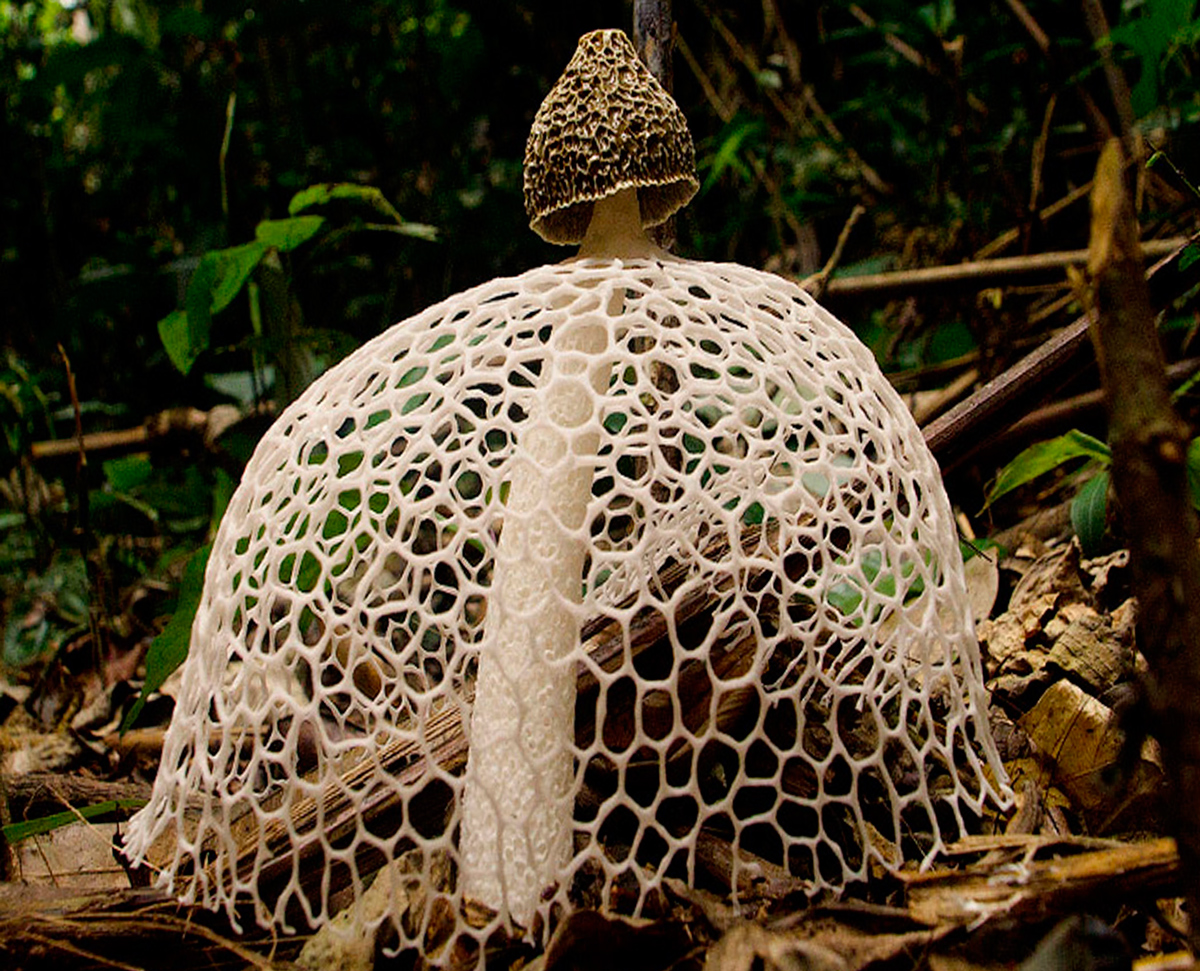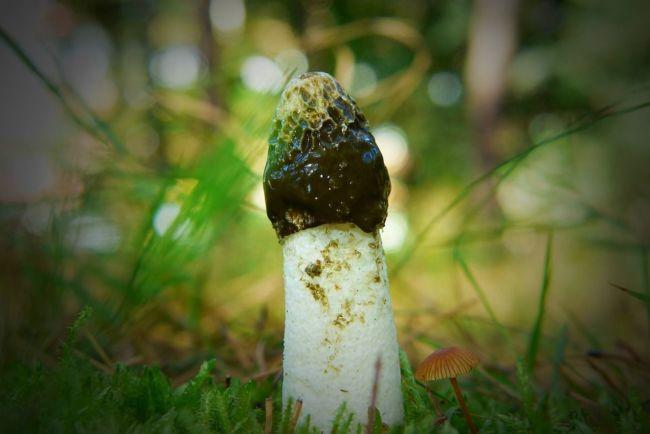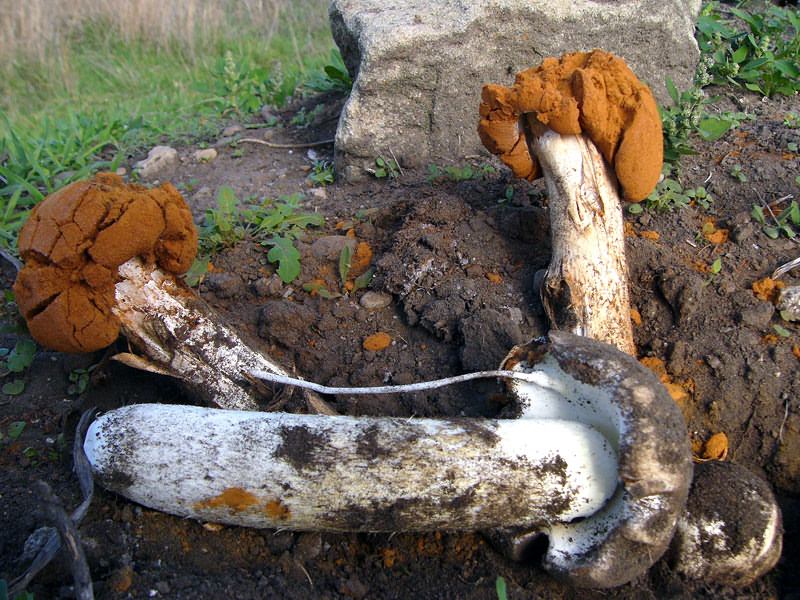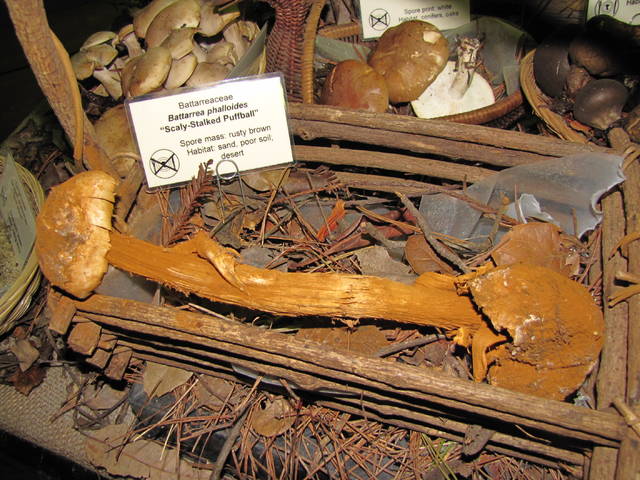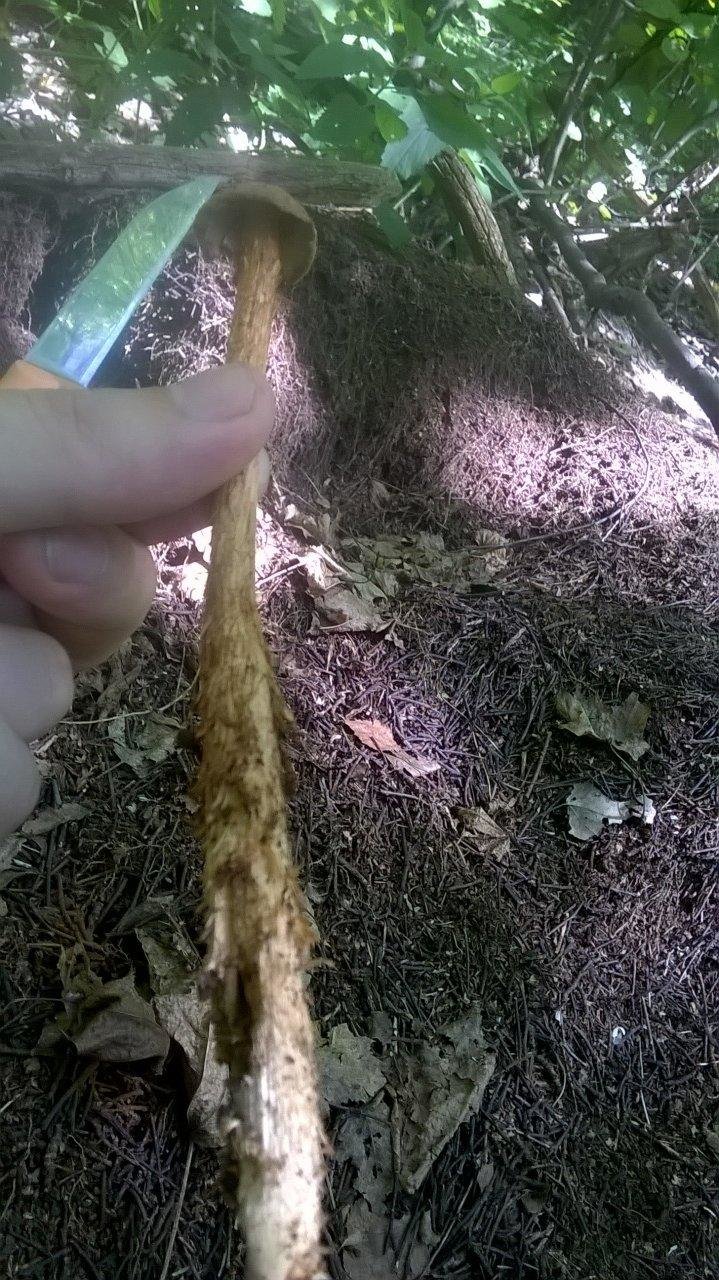Taste qualities of battarreya merry
Battarreya jolly is an inedible mushroom, but this is not due to its toxicity, but to the fact that it has a woody structure. The fruit bodies of these mushrooms are quite tough, so they have no nutritional value.

If there is a desire to taste the jolly battarreya, then only young specimens at the egg stage should be selected. But this is not easy to do, since funny battarreys do not grow everywhere and are rare.
Similar species
Outwardly, the battarrey is cheerful (especially immature specimens) is similar to all other representatives of the Raincoat genus. It is thanks to this external similarity that the battarreys are cheerful and attributed to the Raincoats.
Most of all, the merry battarrey is similar to a meadow raincoat and a brown raincoat.

Stipe
The leg of the merry battarrey is well developed. It has a bright brown color. Its shape is slightly swollen (closer to the middle), and its structure is woody. The upper and lower ends of the leg are narrowed. Its height is approximately 20 cm. The thickness is only 1 cm. The top of the mushroom leg is not smooth, but covered with small scales. Their color ranges from dark yellow to brown. A feature of the mushroom will be a cupped volva around the bottom of the stem. This is due to the presence of a two-layer exoperidium in the fungus. The first outer layer will be leathery and, when broken, will form a calyx at the base of the stem. The inside of the mushroom stalk will be completely hollow.
Place of growth
The rarity of the species is easily explained by the peculiarity of the soil on which it grows. Battarreya merry prefers sandy soil for its habitat. It is desirable that it be dry and with significant admixtures of clay. Such soil is rarely found, and accordingly, the mushroom will not be very common. Battarreya grows in semi-desert areas, you can also find the mushroom in hilly sands and dry steppe, sometimes on loam. In addition, the mushroom grows in small groups (only a few pieces appear nearby).
The mushroom bears fruit twice a year. First, in the spring from early March to the very end of May. The second time comes in the fall and also lasts three months. It starts in September and ends in November.
Description of battarreya merry
Young mushrooms are completely underground. In shape, the fruit body is similar to an egg or ball. When the fruiting body is ripe, the cap and stem are clearly distinguishable. The color of the cap is brown, while at the top there is a formation of a white, depressed shape, which is called the head. The diameter of the cap ranges from 3 to 10 centimeters.
The leg is well developed, its shape is slightly swollen closer to the middle, and narrows at the top and bottom. The structure of the leg is woody. The color is brown. The leg height can be up to 20 centimeters, while the thickness is only 1 centimeter. The upper part of the leg is covered with small brown or dark yellow scales. There is a cup-shaped volva around the lower part of the stem, which is a characteristic feature of the mushroom. Battarreya has a cheerful two-layer exoperidium. The outer layer is leathery, when it breaks, a calyx forms at the base. The inside of the leg is completely hollow.
The cap and leg are brown, as noted, but the shades may vary. The stem is more characterized by yellowish tints, and the color of the cap is more inclined towards an even brown.

Reproduction of battarreya merry
The spread of fungi occurs through spores. The composition of the flesh of the jolly battarreya contains transparent fibers and a spore mass. It is through these fibers that spores are scattered. The dusting period is long. Due to the change in humidity and the effect of air currents, the fibers move in the mass. Due to this, the spores are scattered, and then germinate.
The spread of spores is facilitated by their uncovered location.Spores are not protected from rain and wind, so they are easily washed off to the ground or carried downwind. They have a powdery appearance. The color of the spores, as well as of the fruit bodies, is brown, sometimes there may be a shade of rust.
Growing places of battarreya merry
The rarity of battarreya merry is associated with the peculiarities of the soil on which these mushrooms grow. They prefer sandy soil, preferably dry and with a lot of clay. You can rarely meet such soil, therefore, accordingly, mushrooms are rarely common.

Battarrei jolly grow in semi-desert areas, dry steppes and sometimes on loam. They settle in small groups, only a few fruit chalk can be seen nearby. These mushrooms bear fruit twice a year: first in spring (from March to May), and then in autumn (from September to November).
Battarrei jellyfish do not form mycorrhiza with tree roots, as they grow in desert areas, where shrubs mainly grow.

